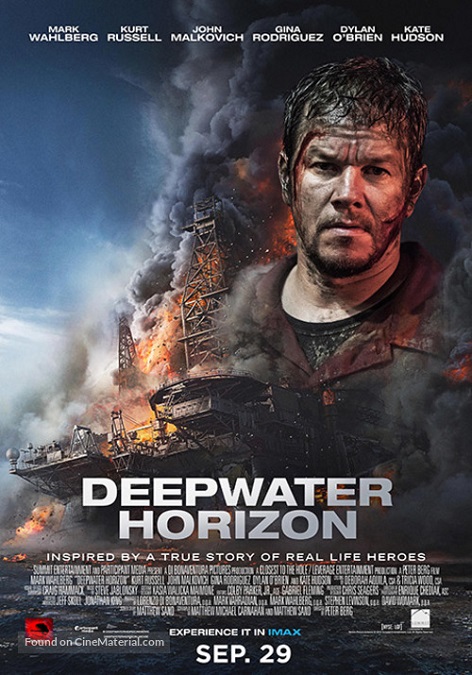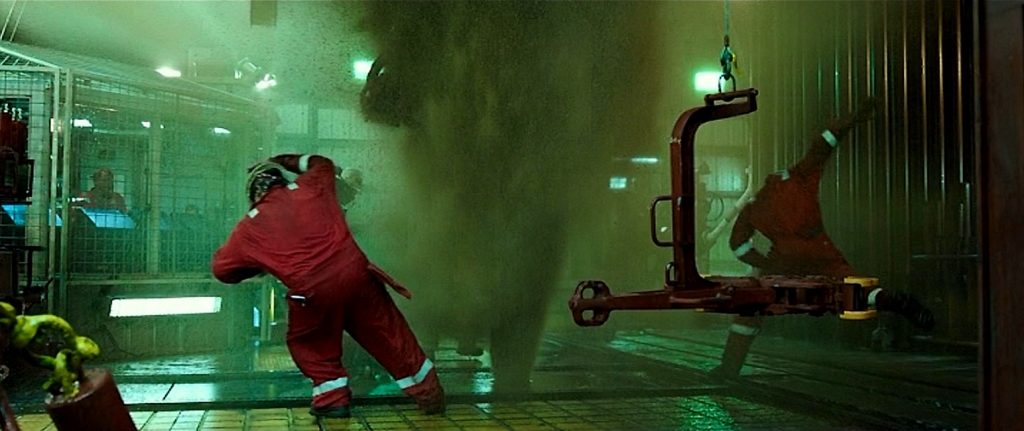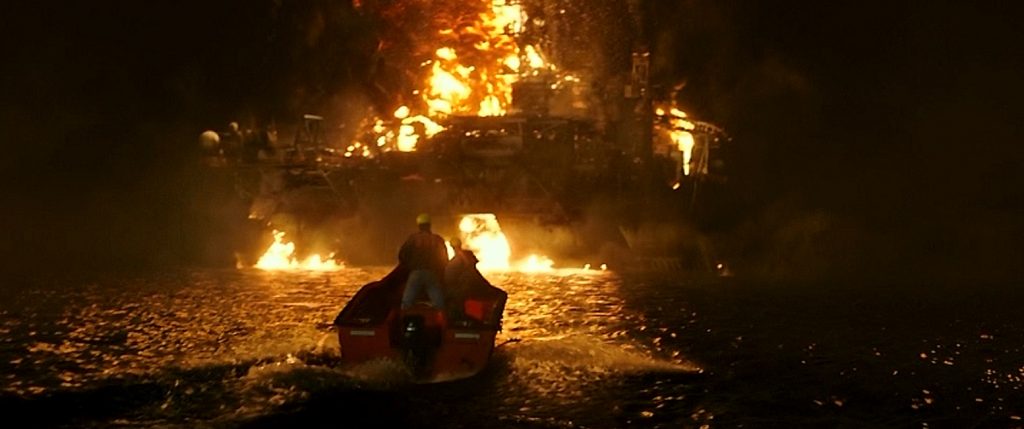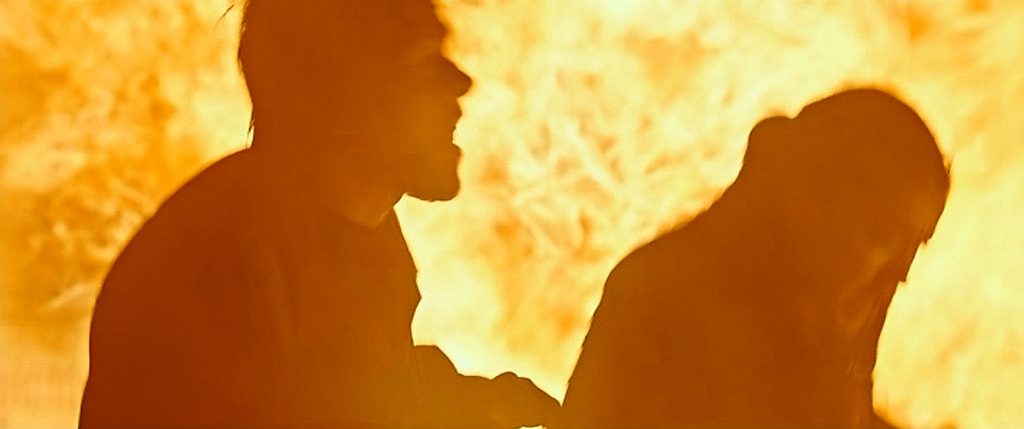



Deepwater Horizon – 2016

This movie, which is based on true events, was done pretty well. Unfortunately, we’ve seen all these effects done before, and just as well. There was nothing new here. As the big effect of this movie was its incredible fire effects, the whole movie was like the movie Backdraft, except on an off-shore oil rig. That’s fine, except that Backdraft came out 25 years before in 1991, and while the fire effects in Deepwater Horizon were good, they were no better than those of the earlier film. The only difference was that these fires probably relied more on CGI.
But we’ve seen plenty of CGI fire effects before, too. So I had to do some reading to find out what earned the effects of this movie an Oscar nomination. Wikipedia didn’t have much to say about the visual effects. I found a three minute and forty-four second video on YouTube interviewing Burt Dalton, who was part of the visual effects team. In it, he says that the most difficult effects in the film were the fire effects, the mud explosions on the drill deck, and the destruction of the drill shack.
It is important to note that the set that was built was an 85% scale model of the Deepwater Horizon oil rig, built in an abandoned parking lot. It was 70 feet tall, and had a functional helipad and elevators. It stood in a tank filled with two million gallons of water. When actors were shown in front of the inferno of flames, only a small amount of real fire was used in the foreground, the rest being added digitally.
But the spectacular wide shots were completely CGI, and there’s no doubt, they looked amazing. The entire rig was like a tower of hellish smoke and fire. There were multiple explosions, flying shrapnel, and burning metal towers and cranes that crashed down, causing massive destruction to the rig. Apparently, when the real survivors of the disaster were interviewed, they said that it looked very accurate.
I personally liked the mud explosions. Yes, similar effects have been seen before, but I really liked the shot where the rig’s main tower erupts all at once, where its solid structure suddenly shoots plumes of muddy water from every side, from its base to its pinnacle. It was an awesome looking effect, like the exploding skyscraper in Independence Day. Then as the drilling equipment is torn apart, pieces of debris start raining down onto the glass windows of the drill shack. Eventually, large pieces of machinery crash through the walls, killing everyone in the shack. Not long after that, there is a wide shot of the rig, where its entire surface is engulfed in a massive ball of fire.
But I have to ask again, why was this movie nominated for Best Visual Effects? Yes, the flame effects looked good, but did they look better than those of other movies? Were there new techniques used to create them? As far as I could tell, no. Was there anything special that set these effects above their peers? My research brought up nothing. Maybe it was the scale of the spectacle, the seventy-foot-tall set. But if those wide shots were all CGI, then the size of the set wouldn’t make any difference. Maybe I’m just missing something…